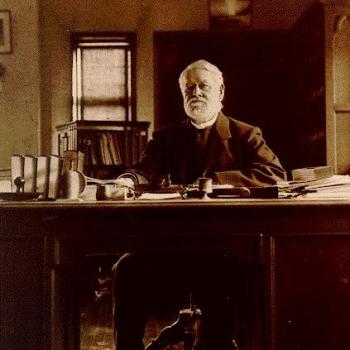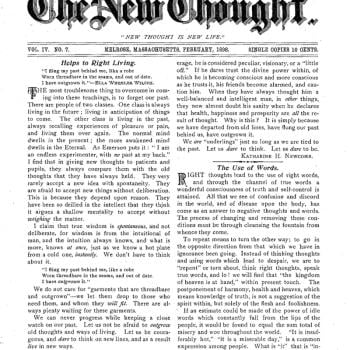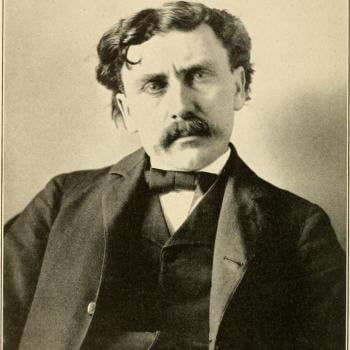The New York Times recently published a wonderful article entitled A Fragile Biblical Text Gets a Virtual Read, concerning the application of modern digital technology to reading an ancient Egyptian codex that includes the Book of Acts. The article itself is fascinating and informative, and the methodologies described are enormously promising. But I do have to quibble with its author, Nicholas Wade, for one remark.
Wade writes in passing, “There was a profusion of gospels and other writings in the early Christian era, and it wasn’t until 367 A.D. that the approved canon, the familiar list of books in the Old and New Testament, was specified by Athanasius, the bishop of Alexandria.” This refers to the Paschal Letter issued by Athanasius in that date, which does indeed include both an Old and New Testament canon very much as we know it in modern Protestant Bibles (although he does omit Esther). Athanasius defined this as the canon (rule), and this letter marks the first appearance of the term “canonized” (kanonizomena) in the context of Christian scripture.
Having said that, continued Athanasius,
there are other books besides these not indeed included in the Canon, but appointed by the Fathers to be read by those who newly join us, and who wish for instruction in the word of godliness. The Wisdom of Solomon, and the Wisdom of Sirach, and Esther, and Judith, and Tobit, and that which is called the Teaching of the Apostles [the Didache], and the Shepherd [of Hermas]. But the former, my brethren, are included in the Canon, the latter being [merely] read; nor is there in any place a mention of apocryphal writings. But they are an invention of heretics, who write them when they choose, bestowing upon them their approbation, and assigning to them a date, that so, using them as ancient writings, they may find occasion to lead astray the simple.
As such, that is excellent evidence of what one important cleric thought should be the official listing, as represented in one critical church community. It also fits neatly with the scheme accepted by Martin Luther, and followed by more or less all later Protestant churches.
For multiple reasons, though, it would be absolutely wrong to see this document as in any way decisive in the wider world of Christianity, and indeed, not even in Egypt itself. I have blogged on this issue on many occasions, and the theme forms a major part of the argument of my 2015 book The Many Faces of Christ.
Briefly, most Christian churches through history are and have been much more expansive than Athanasius in their definition of canon. Most have regarded as truly canonical the so-called Deuterocanonical books, the Second Canon, texts such as Wisdom, Sirach, Judith, Tobit, and the books of Maccabees. That remains true today of most non-Protestant churches, especially the Catholic and Orthodox. I do not mean that these texts are so popular and beloved that they have a near-canonical quality: rather, they are fully canonical and authoritative. That is also true for the Coptic Orthodox Church, the distant descendant of the congregation Athanasius ruled.
Some ancient and potent churches, especially the Ethiopian, retain a still wider canon, including books such as Enoch and Jubilees. Also, particular churches differ in the versions they accept of particular Biblical books, and Daniel especially exists in multiple competing versions. Different churches read different books loosely titled Maccabees, well beyond the famous two found in Protestant apocrypha.
Conversely, other ancient churches are more restrictive in their attitude to inclusion, and are critical of some or all of the Catholic Epistles, or of the Revelation of John. Traditional Syriac versions of the canon excluded 2 Peter, 2 and 3 John, and Jude. The Orthodox church does not include Revelation in its regular cycle of readings. The Wikipedia site on the Biblical Canon has a useful visual guide to these matters, a table describing the various competing canons.
Finally, plenty of local canons through history since Athanasius’s time have admitted other rogue texts. Paul’s alleged letter to the Laodiceans proved extremely hard to eradicate, as did his Third Epistle to the Corinthians. In the Syriac Christian world, people kept on using the gospel harmony known as the Diatessaron for perhaps a millennium after Athanasius’s time, and most believers would have been astonished to hear that it was non-canonical. In Egypt, we know that people kept reading and copying alternative scriptures long after Athanasius’s time. That included the Book of Enoch. As Wade himself says, “it took many years for the familiar New Testament canon to edge out rival Gnostic and Manichaean writings.”
Athanasius had his opinions, and they deserve full respect. But in matters of canon, they settled nothing. If his list prefigures the post-Luther Bible, that is mainly a matter of coincidence.
By the way, this same letter of his has attracted a potent modern mythology, because it allegedly ordered the destruction of non-canonical texts, provoking an orgy of book burning by monks, and supplying a foundation for medieval intolerance. In reality, the Paschal Letter contains no order for the destruction of any document whatever, and certainly not for a mass purge. Not for a second am I denying the intolerance or the monkish vandalism, but they are not connected with this letter.
On hardening church attitudes in this era, see now Catherine Nixey’s controversial The Darkening Age: The Christian Destruction of the Classical World (recently published by Macmillan in the UK, and due out in the US shortly).













